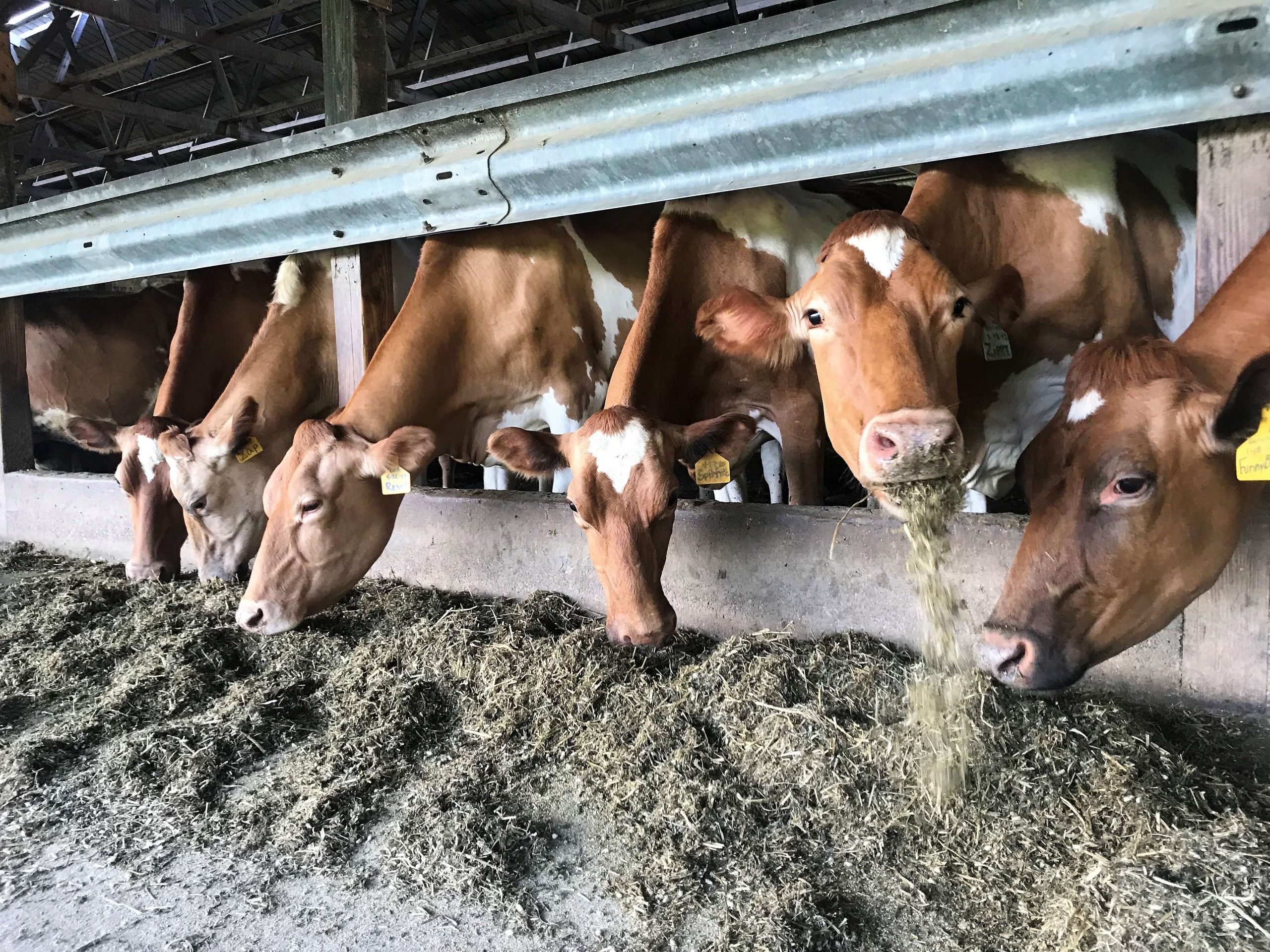New Collaboration for Dairy Breed Improvement
Written by CDCB
August 18, 2022

The Dairy Breed Improvement Collaboration has been launched to benefit breeders and support genetic progress in the Ayrshire, Brown Swiss, Guernsey, and Milking Shorthorn breeds.
This new program has been led by the Council on Dairy Cattle Breeding (CDCB) with collaboration across all its member sectors – Purebred Dairy Cattle Association, National Association of Animal Breeders (NAAB), Dairy Records Providers and Dairy Records Processing Centers.
“Our aim is to support all dairy breeds and to help achieve the genetic improvement desired by breeders of Ayrshire, Brown Swiss, Guernsey, and Milking Shorthorn cattle,” said Jay Weiker, President of NAAB and Chair of the CDCB Board of Directors.
There are more tools than ever to accelerate genetic progress with the evolution of genotyping, genomic evaluations and advanced reproductive techniques. However, larger data streams and a higher number of records are key to maximize genetic progress and accuracy in genomic evaluations.
”We recognize it is more challenging for breeds with smaller populations to take full advantage of these tools,” Weiker continued. “We want to do our part to provide value-driven access and increase participation in the programs that support breed improvement.”
Key objectives
The new Dairy Breed Improvement Collaboration has these main objectives:
- Greater participation in programs that support breed improvement – identification, registration, type classification, DHI, genomic testing, NAAB cross reference
- Value-driven access to CDCB genomic evaluations for bulls of smaller-population breeds
- Technical support in genetic improvement strategies
An important element for genetic progress is to increase the number of bulls that are genotyped and receive genomic evaluations. To support this, CDCB announces a credit of $400 on the A.I. service fees (from the standard of $800 per domestic bull) for Ayrshire, Brown Swiss, and Guernsey bulls declared active for A.I. service. Milking Shorthorns would become eligible when the breed starts genomic evaluations. With this program, bulls will be enrolled in the NAAB cross-reference database and obtain an NAAB code, which is necessary for phenotypic data (performance records) to flow through the DHI system and into the CDCB database for genetic evaluations. The increased quantity of records result in improved accuracy of both male and female genomic evaluations.
Additionally, CDCB offers technical assistance to the breed associations as they determine genetic improvement strategies, develop breed-specific indices and implement genetic selection programs that support goals set by the breeders. This support will be facilitated by theCDCB Outreach Specialist, a new position focused on engagement with CDCB collaborators and dairy producers.
Expectations for breeders
The four breed associations demonstrated their commitment, through adoption of these requirements intended to increase genomic testing and participation in the industry programs that advance breed improvement.
- A.I. bulls must be genotyped to be registered
- Progeny of A.I. bulls can only be registered if the sire is enrolled in the NAAB cross reference program
- Bull’s dam and sire must be registered
Strategic, collaborative approach
This effort began in 2021 through a special task force facilitated by CDCB and appointed by the CDCB Board of Directors. The group was charged to review existing A.I. fees for smaller populations and recommend strategies to stimulate larger enrollment of bulls in the NAAB cross-reference program. The task force was facilitated by João Dürr, CDCB CEO, and included representatives of the four dairy sectors that comprise CDCB.
- Dairy Recording Processing Centers: Mark Rodgers, dairy producer
- Dairy Records Providers: Susan Lee, Idaho DHI
- National Association of Animal Breeders: Katie Olson, ABS Global
- Purebred Dairy Cattle Association: Neal Smith, American Jersey Cattle Association and chair of the task force
The recommendations and action plan proposed by the task force were approved by the CDCB Board of Directors, which has representatives from all four member-sectors.
The bottom line
Genomics has become one of the most impactful innovations for dairy cattle improvement. Yet, this new tool must be applied in combination with the other practices that enabled considerable progress in all breeds over the past century.
Securing a strong national database of phenotypic information is more important than ever because it allows us to define the reference populations that can ensure reliable genomic predictions. Both data quality and data quantity matter. To continue to improve our dairy population, it is imperative that dairy producers continue to engage in animal identification, registration, DHI, type classification, NAAB cross reference, and CDCB genotyping programs.
The Dairy Breed Improvement Collaboration brings together all sectors committed to dairy cattle improvement to reinforce the fundamentals of genetic progress and offer a special hand to those breeds that are not yet optimizing the modern breeding and genetic technologies.
